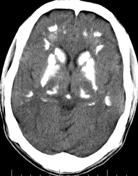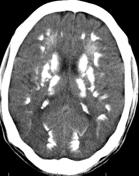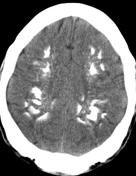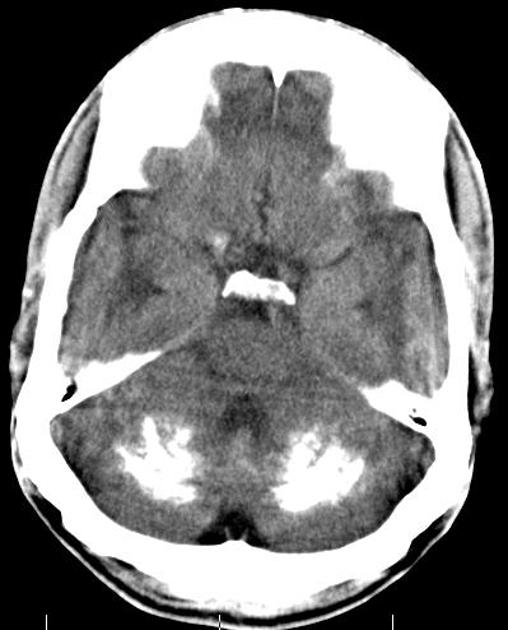Presentation
Referred for evaluation of seizures. Normal blood chemistry.
Patient Data
Note: This case has been tagged as "legacy" as it no longer meets image preparation and/or other case publication guidelines.





Non-contrast CT shows bilateral symmetrical dense calcific foci in the dentate nuclei, basal ganglia, thalami, and corona radiata.
Case Discussion
CT brain which easily detects calcium, is the preferred method of localizing and assessing the extent of cerebral calcifications. Most frequently the calcification is in lenticular nucleus, especially the internal globus pallidus. Calcifications in the putamen, thalami, caudate, and dentate nuclei are common. Occasionally, calcifications begin or predominate in regions outside the basal ganglia.
Calcification seems to be progressive, since calcifications are generally more extensive in older individuals and an increase in calcification can sometimes be documented on follow-up of affected subjects.
The calcifications in primary Fahr syndrome are not distinguishable from those secondary to hypoparathyroidism or other causes. Cerebellar gyri, the brain stem, centrum semiovale, and subcortical white matter may also be affected.




 Unable to process the form. Check for errors and try again.
Unable to process the form. Check for errors and try again.